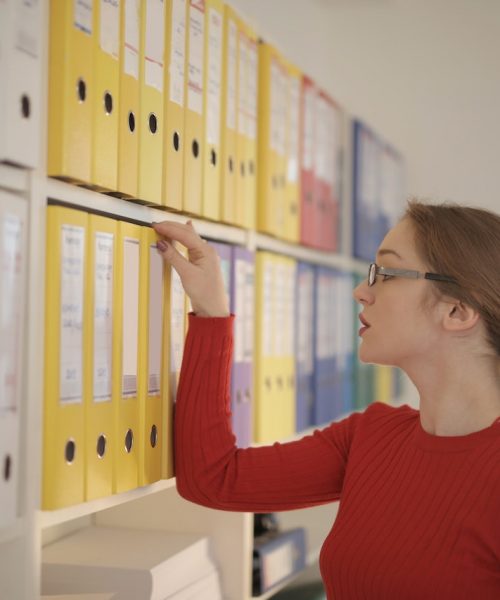When it comes to determining whether or not your business is a sole proprietorship, you’ll need to make certain considerations before filing your income tax return. For example, you’ll need to determine whether or not your business is eligible to apply for a business number with the federal government. In addition, you’ll need to consider paying sales taxes and applying for various permits from various government agencies. Fortunately, the government of Canada has created a platform called BizPal, which will help you identify what types of permits you’ll need to operate your business. It also allows you to apply for a business bank account.
Business income and personal income are reported on the same tax return
If you are a sole proprietor in Canada, you will report both your personal and business income on the same tax return. Unlike in the US, where businesses must file separate returns, the Canadian government doesn’t have such a requirement. Your personal income is reported on Schedule A of your tax return, while your business income is reported on Schedule D. If you are a sole proprietor in Canada and own your own business, you can deduct business expenses. The CRA has a guide that you can use to determine what expenses are deductible.
Income earned abroad is taxable in Canada. However, Canadian law also allows you to deduct foreign taxes paid to a foreign government in lieu of Canadian taxes. You can deduct your foreign taxes by allocating these credits to the country where you performed services.
If you are a sole proprietor in Canada, you will be required to file Form T2125 if your business is unregistered. This form is required to report all business income and expenses. In addition, you must fill out Form T2125 to list your deductible business expenses.
While the federal government collects the federal taxes, the provinces and territories to apply different tax rates and tax brackets to individuals. In Quebec, income from partnerships is not taxed directly, but the partners are taxed on their share of partnership income. For residents, the deadline for filing self-employment tax returns is 15 June.
If you own a sole proprietorship in Canada, you have to report all business income to the CRA. Your business income is reported in 3A, while your professional income must be reported in 3B. It is also important to enter your reserve amount deducted in the previous year.
Business income and personal income are reported on the tax return of a sole proprietor in Canada. In some cases, you can deduct both personal and business income, as long as you are a resident of Canada. Non-residents who are not a resident in Canada must report their net rental income on their tax return.
Losses can be used to reduce personal income in the tax year they are incurred
As a sole proprietor in Canada, you can claim losses that you incur on your business. However, it’s important to note that the amount of your business losses must exceed your business income to be deductible. In addition, losses must be for expenses that you don’t consider capital. Otherwise, you risk being in trouble with the Canada Revenue Agency.
To claim these losses, you must keep all receipts that relate to your business. Even small expenses can add up over the course of the year. You can then use these expenses to reduce your taxable income. In addition, you can also claim a tax credit if you donate to charitable organizations. You can get a higher tax credit if you donate $200 or more to charities.
You can also use your losses to reduce personal income as a sole proprietor. Generally, a sole proprietor can claim up to $25,000 in net operating losses each year. These can be carried back for three years or carried forward for seven years. However, if you incur a loss during a year, you must apply for a deduction within the year.
When calculating your taxable income, you need to consider whether the business losses are capital or non-capital. In addition, you need to determine the right time to claim your non-capital losses. The best time to claim business losses is when the expenses exceed the income. In addition to the current year, losses can be carried forward for up to three years and can be used to offset future taxes.
As a sole proprietor in Canada, you can use your business losses to reduce your personal income. This will help you minimize your tax burden. However, it’s important to understand that you can’t carry losses back to the year you start the business.
Estimating taxes owing
Estimating taxes owing as a sole owner in Canada is easy, but it is important to know when and how to file them. Self-employed people in Canada are required to file Form T2125, Statement of Business and Professional Activities, on which they report all of their business income. Generally, the tax rate for self-employed people is the same as the rate for other businesses.
As a sole proprietor in Canada, you must charge GST and HST every month unless you choose to close your account. Failure to do so will result in penalties and interest, so it is crucial to pay on time. Make sure you have a pen and paper handy, and have a cup of coffee or tea on hand. Also, it is helpful to know the terms “self-employment” or “self-employed tax” before you start calling.
The tax deadline for the third quarter of 2022 is September 15, and the final extended tax deadline is October 17, unless you have requested an extension of time by filing the correct forms. If you have questions about your taxes, consider contacting a tax professional or using a tax software. This will make the tax season easy and convenient.
In addition to income, sole proprietors can claim a variety of deductions. These can reduce your taxable income, so you will pay less tax or even get a refund if you overpay. Some of these deductions include health insurance premiums, childcare expenses, mortgage interest (if you own your own home) and charitable contributions.
While self-employed individuals may not be required to file federal taxes, they are responsible for Medicare and social security taxes. To calculate their social security and Medicare taxes, sole proprietors must complete Schedule C and Schedule SE forms. In addition, sole proprietors can deduct half of their self-employment tax on their federal 1040 form.





























